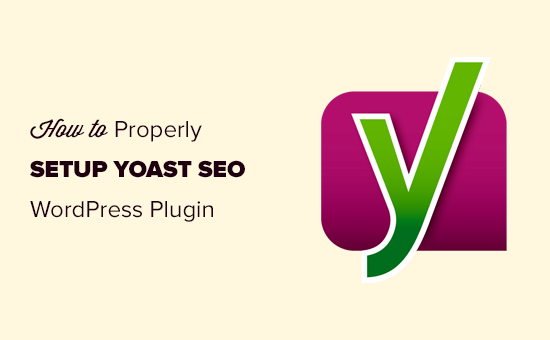
SEO is an essential part of website optimization. Without SEO, your website won’t stand a chance of ranking in SERP. WordPress needs an SEO plugin to access control over the website.
Yoast SEO is the most popular WordPress plugin that offers comprehensive features, which help in website optimization. The plugin comes with build-in complex features that help to pinpoint the site’s ability to optimize better.
Most beginners are unfamiliar with the installation and setup of the plugin. This guide will help you with the installation and setup process.
How to install the Yoast SEO plugin?
Firstly, you need to install and activate the plugin on your WordPress website. Once activated, you’ll notice the Yoast logo in the admin bar of your website.
Setup of the Yoast SEO plugin:-

1. Import your data
It does not apply to a new site. But for an existing site, it’s vital to import your previous plugin data before you deactivate the other one. For this – you can use an SEO data transporter. It allows you to transfer your data from one plugin to another with ease.
2. The site settings
Click on the SEO icon – and go to the settings page of the plugin. Once you switch to the general tab, you will notice the configuration wizard.
3. The plugin features
Yoast SEO comes with many features. This step allows you to enable the features you want to use on your site. Let’s talk about the features:
-
Readability analysis – shows your content score
-
SEO analysis – shows the SEO score and breakdown
-
Cornerstone content – allows you to mark and filter the cornerstone content
-
XML sitemap – creates sitemaps for your site
-
Text link counter – shows the internal links to and from of the article
-
Security – hides the advanced settings from authors to improve the security
-
Usage tracking – allows plugin author to track usage data
-
REST API – allows a user to fetch SEO data from a specific post or article
4. Integrations
Yoast comes with built-in integrations for SEMrush and Ryte. With SEMrush – you can find all the related keywords for content and improve your content strategy. Ryte helps to check for indexability – and alerts you about the site health report.
5. Webmaster tools
Most popular search engines allow WordPress sites to feature in the Webmasters tool. Yoast SEO helps with your site verification – so that it can feature in top search engines.
But you will have to sign up for the webmaster tool program. After which, you will be asked to add a Meta tag to verify your ownership. Also, you can add Meta code that you receive from search engines.
6. Search appearance
It helps to control how your site will appear in search results. Let us talk about settings:
- General setting – lets you choose the site title and Meta description for your site homepage. Here, you can find Schema options and a knowledge graph for your website. It lets you choose – whether your site represents an individual or organization.
- Content types – lets you choose the title and description. Also, it allows you to set up automatic templates. It lets you set SEO title template – and default Meta description. At times, you can tweak your SEO title and leave the description blank.
- The archive tab – allows you to control the search appearance for pages like – date, author, 404 pages, and search. Though, default options work for most websites.
- Breadcrumbs – let you define a clear path to the page you are on. It also helps you appear in search results – giving your site an added advantage. Make sure you enable this option.
- RSS feeds – use content scrapers to copy content from your website. It allows you to add a backlink to your site for each post.
7. Social
Yoast SEO plugins let you integrate with social websites to increase your site visibility. Click on the social link of the social settings – and configure it according to your need.
The accounts feature tells Google about your social profiles. You will need to add URLs and user names for the main social profile. Verify and enable all the features of social profiles based on your engagement levels.
8. Tools
Yoast SEO comes with built-in tools that help you to perform advanced tasks.
-
Import and export tool – lets you import previous site data.
-
File editor – lets you configure different files that can impact your site performance. It allows you to edit the Htaccess file and robots.txt file from the admin area.
-
The bulk editor tool – allows you to add descriptions and titles for your blog posts.
9. Redirects manager
In the premium version, you can use the redirects manager feature. It allows you to set up redirects on your WordPress website. It lets you fix 404 errors from old posts.
10. Post optimization
You can edit a post through the post editor feature by adding a focused keyword or keyphrase. Check your post content for readability analysis and SEO.
Once you know the analysis, you can improve your content further. SEO and readability analysis feature is accurate – in improving your site content.
11. Optimizing for E-com products
Yoast SEO comes with full E-com support and lets you optimize for your E-com features. You can edit an old product, edit content, enter focus keywords and change the description with the feature. You can also change product-related keywords.
The process is simple,
Installing Yoast SEO is simple – and activation does not take time. The only thing you need to consider is the features. And features of the plugin can be optimized and customized depending on your website needs. Install Yoast SEO plugin for improving your site performance and SEO.





